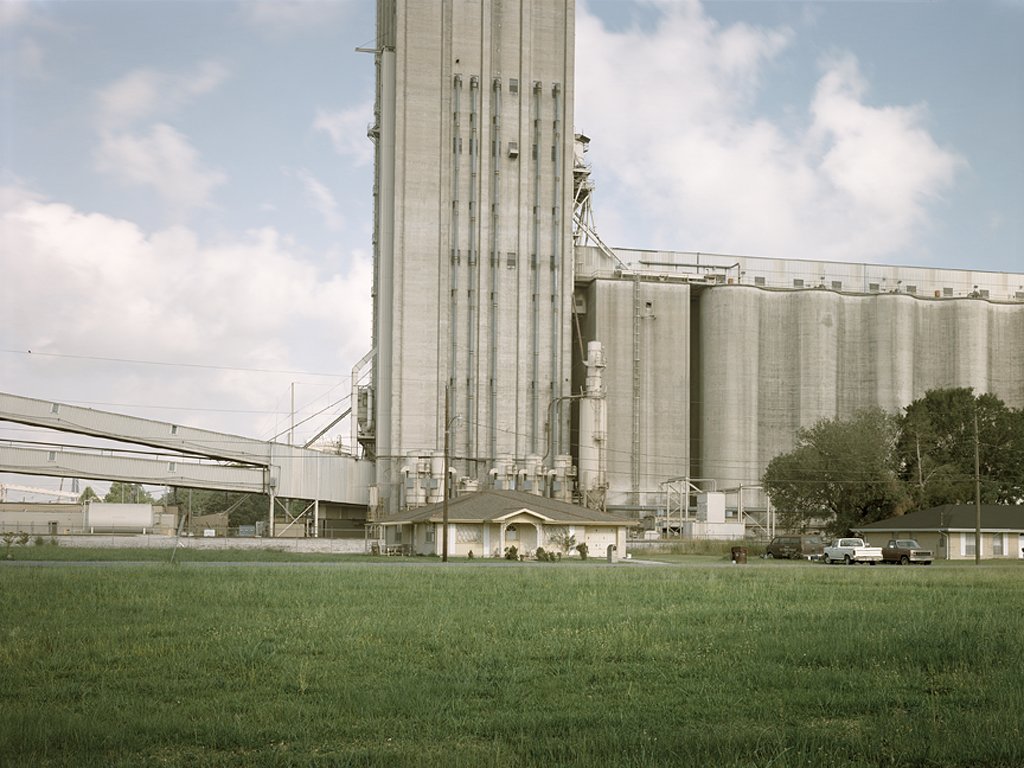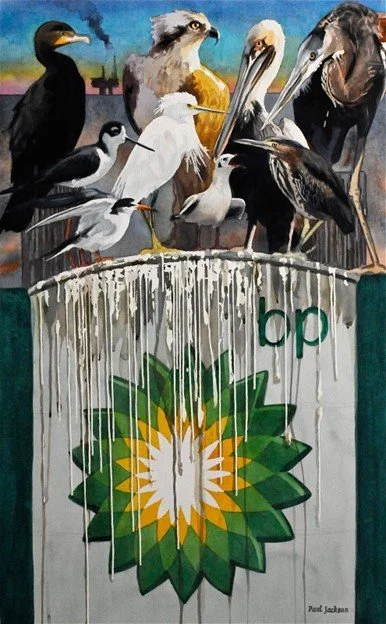Richard Misrach, American
Home, Destrehan, Louisiana, 1998 (print 2012)
At first glance of this photo, one barely notices the house that is there. It is such a classic house, with the yellow tinted walls in contrast to the green lawn. However, you would barely notice it was even there given the vastness of the factory behind it. This factory overtakes it, making it look miniscule. It is similar to how these industries over shadow the people within the communities who live there. This is an image taken by Richard Misrach to highlight the proximity of homes to places of high pollution. The community that is close to this factory experiences air, water and noise pollution. It is a community with higher rates of poverty that these companies are able to exploit given the taxation policies. This is yet another example of environmental injustice. Label by Riley Kelley




